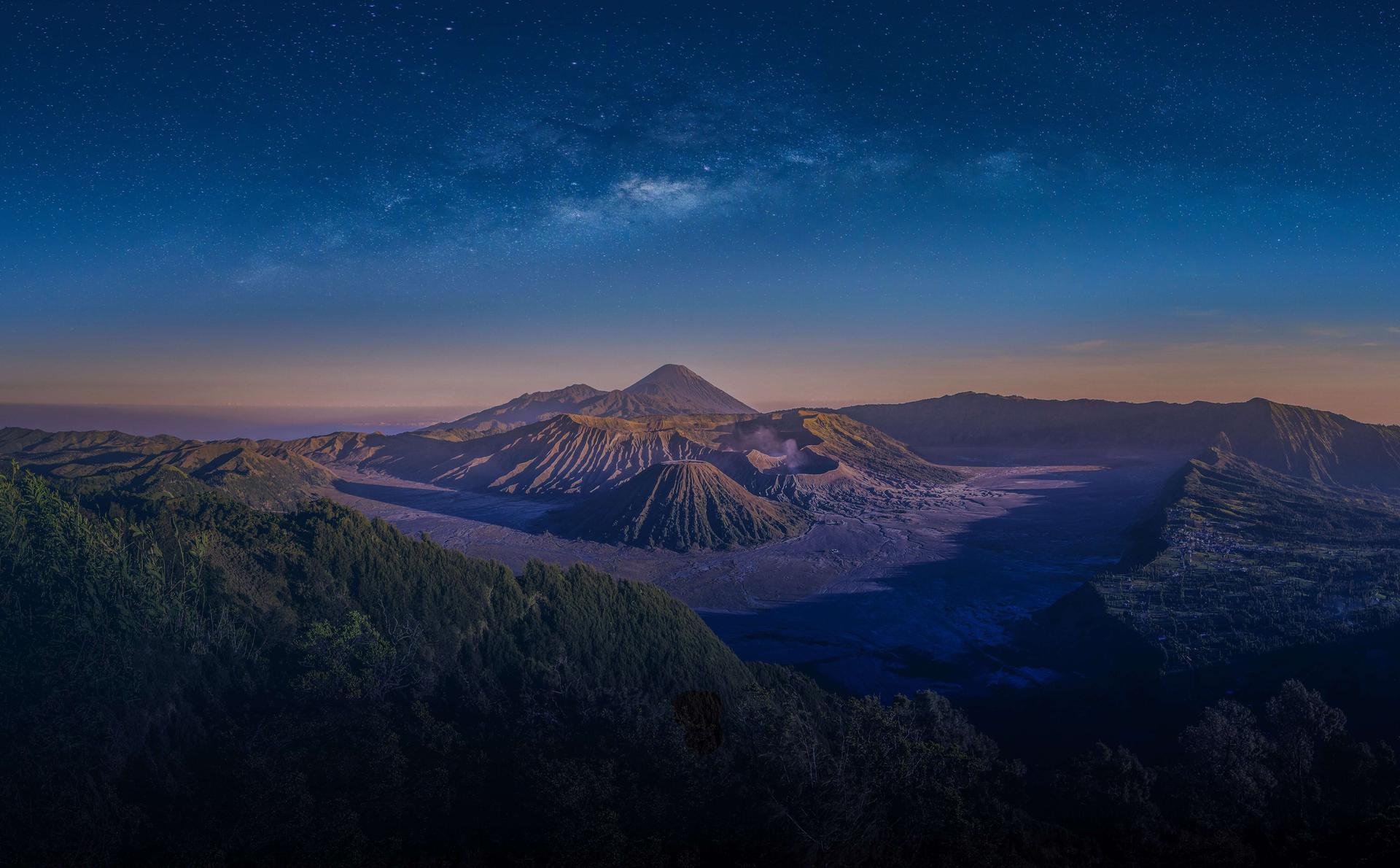Exploring Indonesia's Most Majestic Volcanoes

For as long as I can remember, I’ve always been amazed by volcanoes. So when a friend told me about an article in National Geographic showcasing hypnotic blue flames, I knew immediately that I had to witness it for myself.
Why was this blue flame so special, you ask? Well, according to the magazine article, only two volcanoes in the world emit blue flames (one in Indonesia, the other in Ethiopia). This unique phenomenon is a result of combustion of sulfuric gases. I set out on my first trip to East Java to get up close to two of the most majestic landscapes in the Indonesian Ring of Fire – Ijen Crater and Mount Bromo, Indonesia’s famous Javanese volcanoes.
Chasing the blue flames at Ijen Crater
Credit: Navjit Kaur
The hiking experience up Ijen Crater was a unique and tough experience. Starting at midnight, this hike let’s you catch the blue flames that are only visible at night. Scrambling in the darkness on a cool August night lit with stars, the hike up Ijen Crater was, thankfully, a straightforward one. For me, the challenging part of the hike was descending to the crater to see the blue flames.
Gas masks played a vital role due to the strong smell of sulphur. During the hike, it’s common to see sulphur miners carrying their load with very little mask protection. (Tip: Leave your face masks there for the miners if you don’t intend to use it in future. These miners work in extremely harsh conditions and are compensated so little for the sulphur they sell.)
After the witnessing the blue flames, I hiked a bit further and was rewarded with the view of a beautiful yet highly-acidic lake at the crater during sunrise. The panorama is was absolutely breathtaking as the pink hues of the sunrise played backdrop to a turquoise lake.
A sea unlike any other
Credit: Navjit Kaur
Walking across the Sea of Sand was a surreal experience. I thought of it as probably the closest feeling of what it’s like to walk on Mars, with its barren scenery of fine volcanic sand. On my way across this lunar landscape, I noticed a lone temple, overshadowed by the majestic Mount Bromo. This was none other than the Pura Luhur Poten, a Hindu temple belonging to the Tengerese people. It’s open only once a year during the Kasada festival, and during the celebrations, offerings are thrown into the crater. Though you can’t enter, you can still admire the rows of statues and structures from the outside.
The spectacular Mount Bromo at sunrise
Credit: Navjit Kaur
Mount Bromo, a part of the Bromo Tengger Semeru National Park, is located in East Java, to the east of Malang and to the southeast of Surabaya. This towering mountain stands in a sea of ashen sands. The smoke that surrounds its peak like a halo isn’t mist but a cloud of sulphur. The sulphuric gas may be too strong and it’s advisable to bring along a face mask to avoid discomfort.
After a 30-minute walk across the Sea of Sand, I reached the foot of the mountain and then worked my way up along the mountain’s slope to reach the edge of the crater. I was breathless by the end of it; though I’m unsure whether it’s from the steep climb up, the sulphuric gas emerging from the crater every few minutes, or having my breath taken away at the stunning view. Regardless of the reason, it was totally worth it.
Going for green at Mount Batok
Credit: Navjit Kaur
“Sometimes beauty is overshadowed by popularity”. This was my exact thought passing the beautiful, moss-covered Mount Batok, while walking across the Sea of Sand towards Mount Bromo. The dead (albeit greener) mountain adds to the scenic landscape of the area.
Mount Batok is one of the five volcanoes inside the Tengger Caldera that also includes Mounts Kursi, Watangan, Widodaren and of course, Bromo. Horses, besides jeeps, are one of the most common means of transportation across this Mars-like landscape. If you’d like to take in the majesty of Mount Batok for yourself, the walk to Mount Bromo itself is relatively easy without having to hitch a ride.
By Navjit Kaur
This article originally appeared on Zafigo, a travel guide for women travellers in Asia and the Middle East, and is republished with permission.
Recommended Articles

FAQ: Disney Cruise Line Delayed Sailing

The Ultimate Guide on How to Get to Phuket from Krabi

Roaring Through the City! Jurassic World: The Experience Bangkok

Where to Stay in Bali? Here Are 7 Areas to Choose!

Halloween Horror Nights 2025: What To Expect, When, Where, and How Much

The LEGO Flower Garden MINILAND: A Blooming Paradise at LEGOLAND Malaysia Resort




















 Facebook
Facebook Instagram
Instagram TikTok
TikTok Youtube
Youtube Telegram
Telegram
